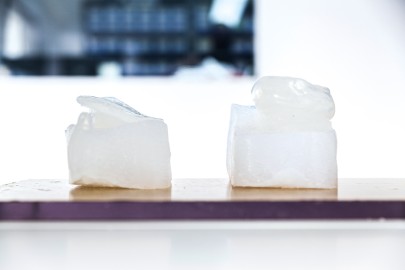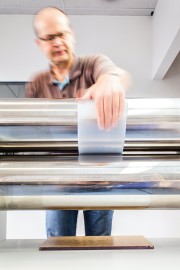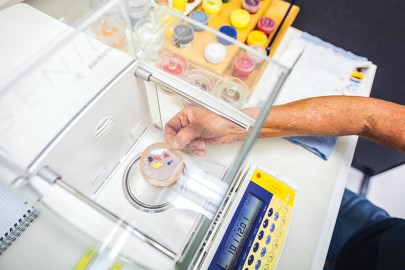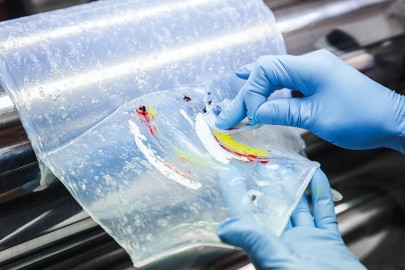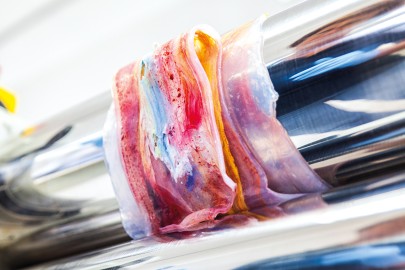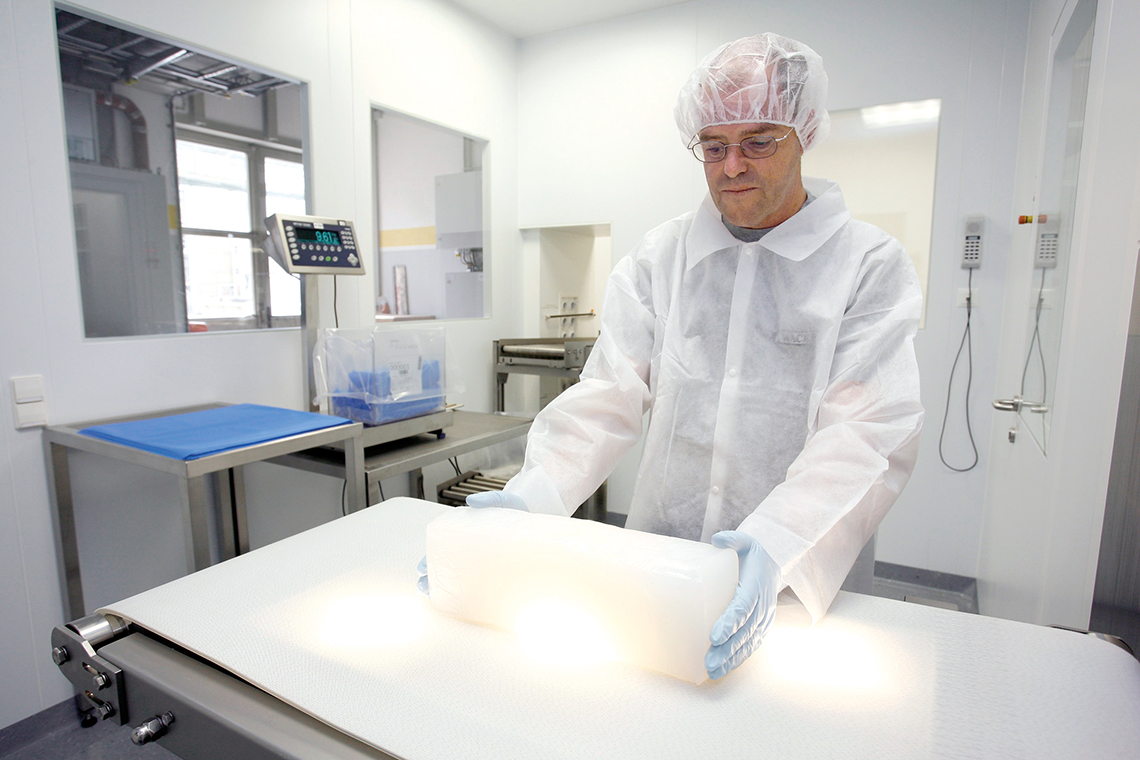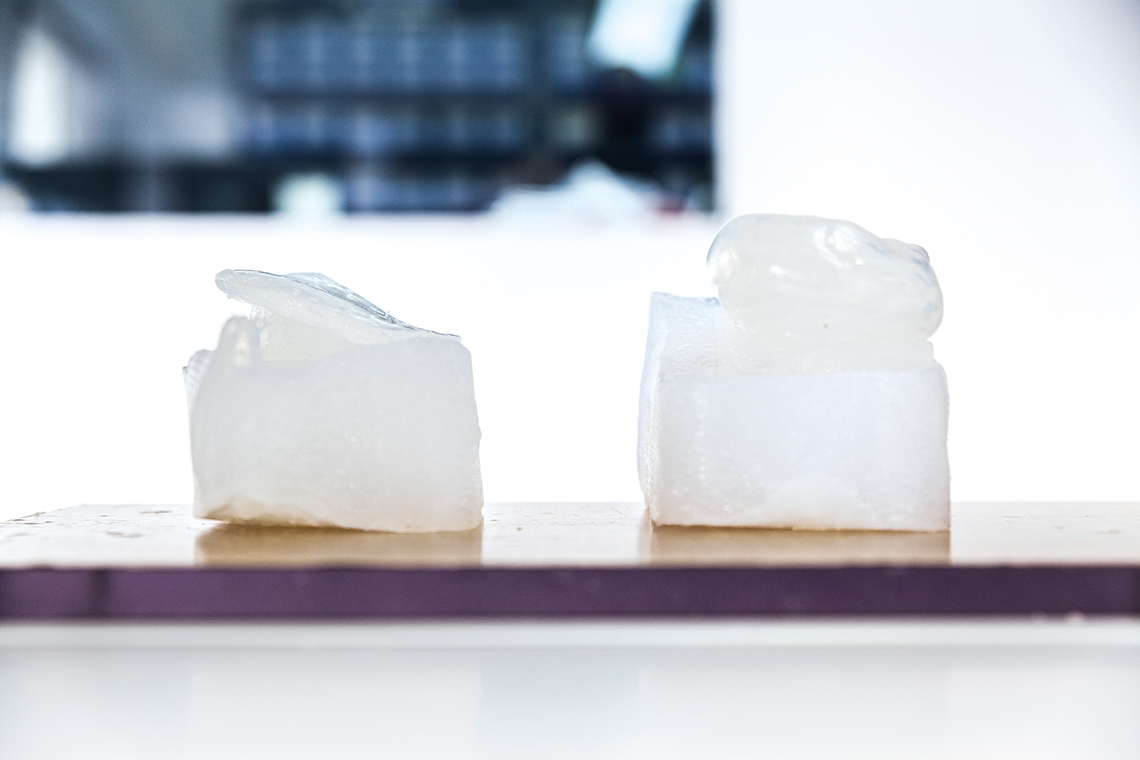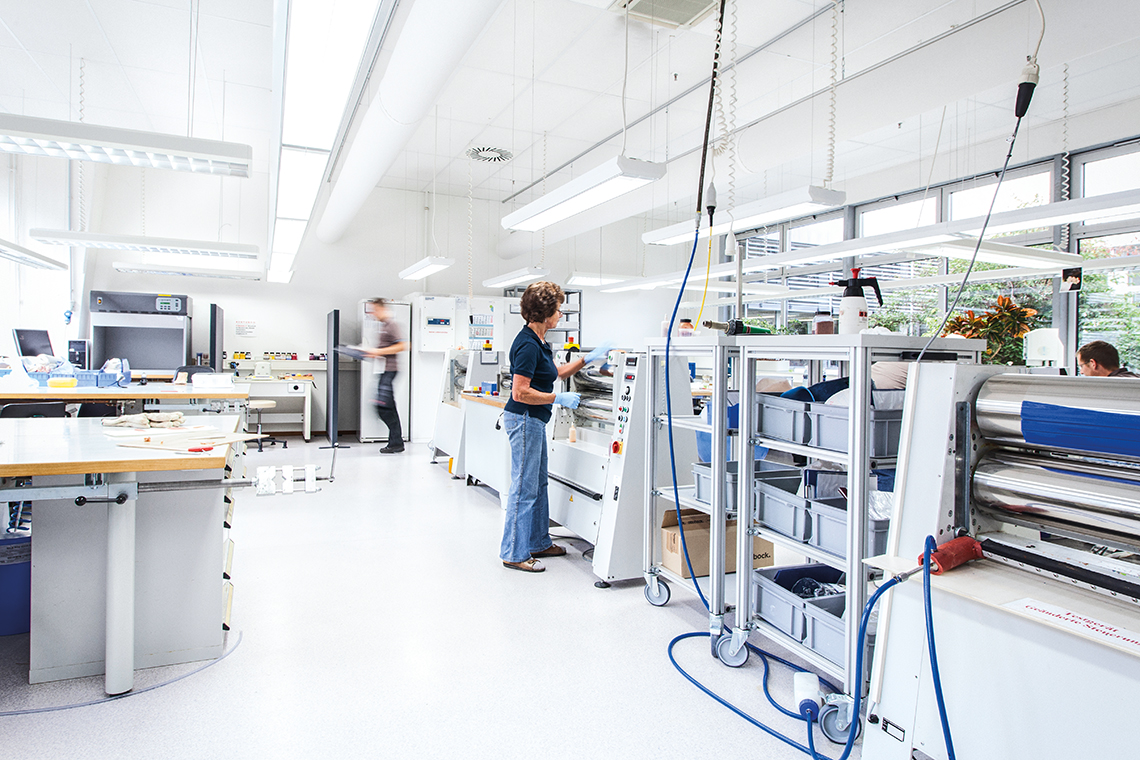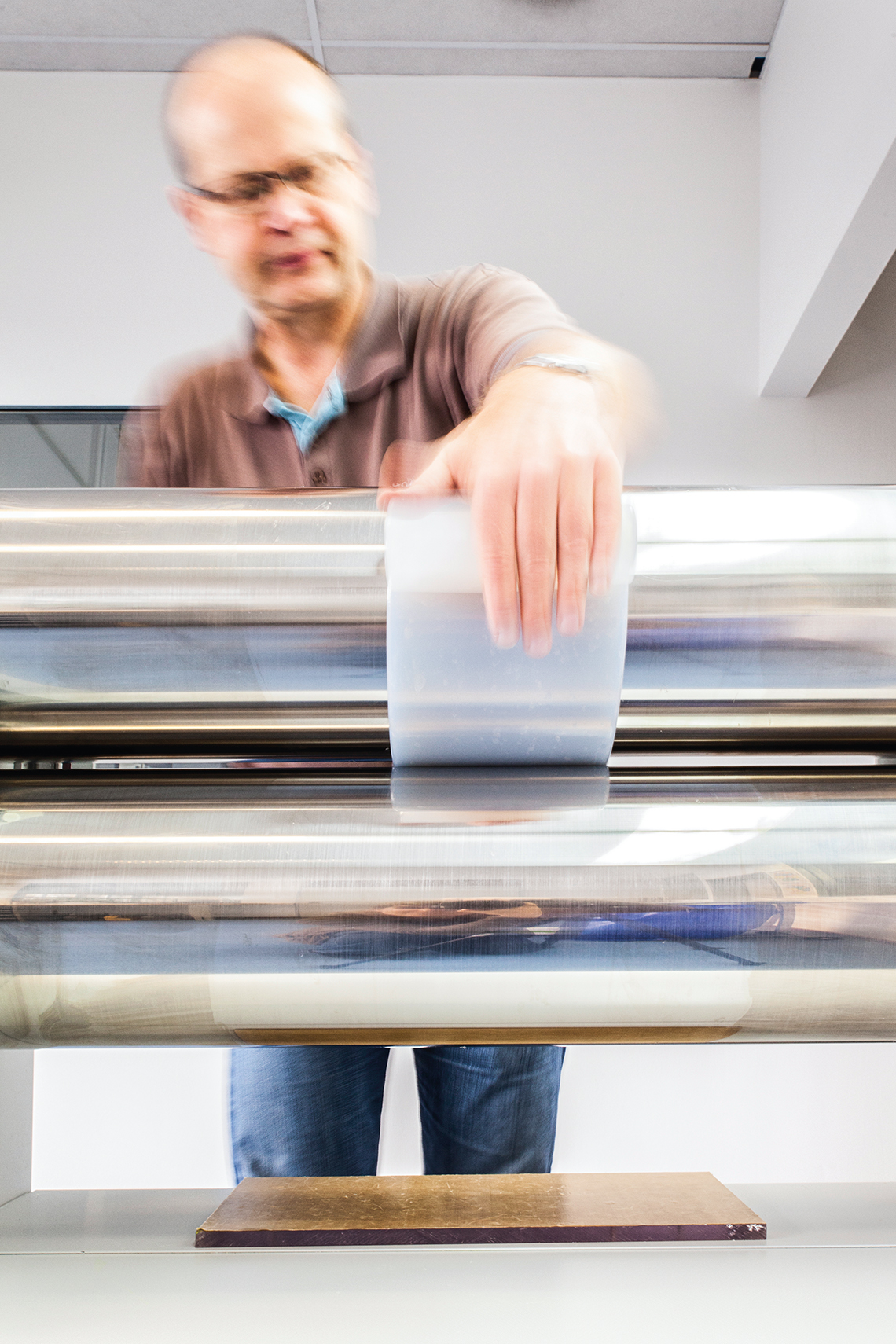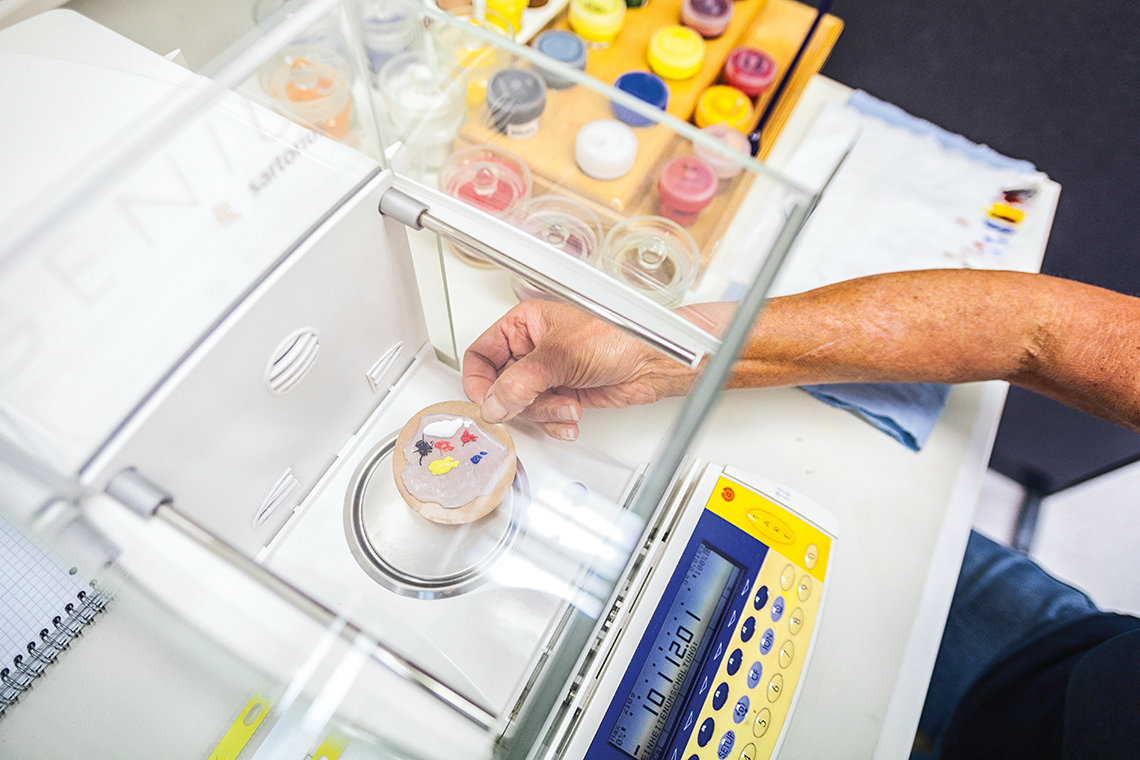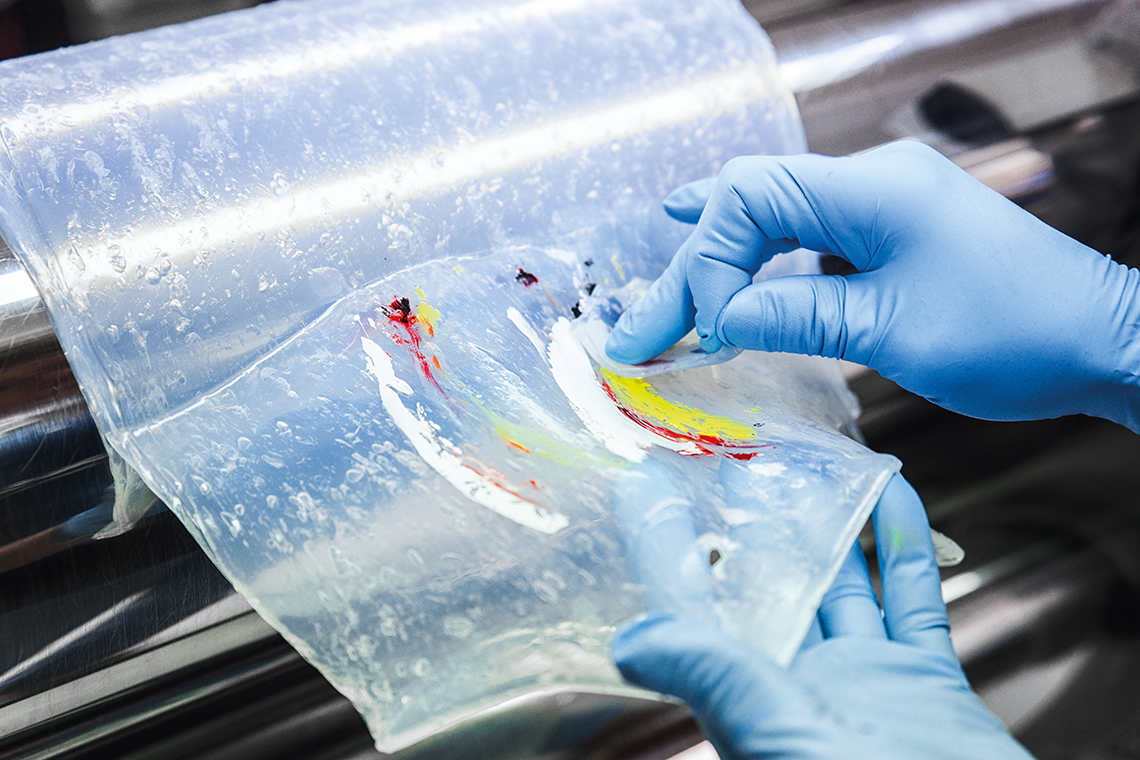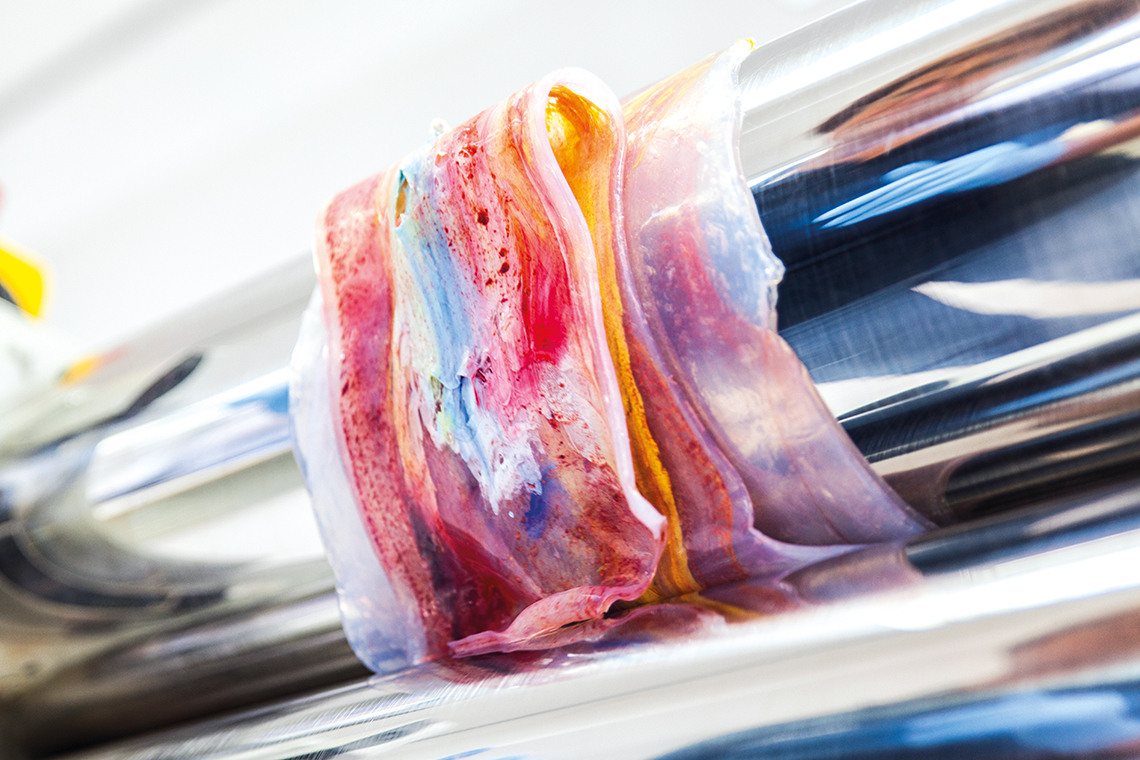Handcrafted Prostheses
Silicone elastomers from WACKER can be used to make lifelike reproductions of amputated limbs. This craft has been perfected by the German manufacturer Ottobock, whose silicone limbs help patients to enjoy a better quality of life.
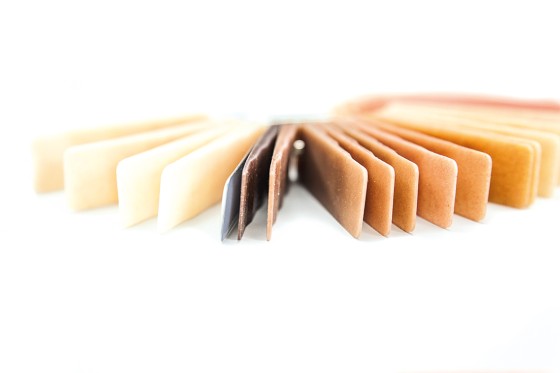

The fingers are slender and delicate. Tendons and veins seem to shimmer through the back of the hand. Janine Grützmann applies another extremely thin layer of slightly reddish silicone so as to get an even closer match for the coloring of the joints. Every year, hundreds of such deceptively realistic hands, feet, fingers and toes are artistically crafted from WACKER silicone at Ottobock, a prosthesis maker in Duderstadt (Lower Saxony, Germany). This group with around 5,000 employees produces more than prostheses, however – it also makes orthopedic articles and wheelchairs. Furthermore, it is one of the main sponsors of the Paralympics – the Olympic Games for physically-disabled athletes.
Craft and Art
Every week, Grützmann, a qualified dental technician, models two to three hands from the dough-like silicone. It is a craft that was developed in 1995 by a Belgian dental technician and for which there is no special training. Grützmann learned it on the job at Ottobock – step by step. “I was assigned to work on individual fingers, before graduating to hands and then, at some point, to whole arms.” The first step in making a prosthesis is to take an impression of both the stump and of the patient’s intact hand. Then a lump of flesh-colored silicone rubber compound is placed on the stump and a copy of the intact hand is modeled. “You cut off what you don’t need,” says the Otto Bock employee, “until the fingers and palm gradually take shape.”
“We use the material’s translucency to mimic the skin’s light permeability.”
Andreas Leiniger, Head of the Silicone department at OttobockProstheses Should Look Natural
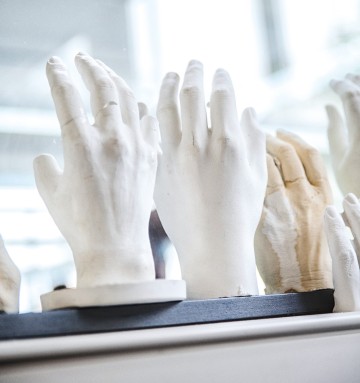
Plaster casts like these form the basis for constructing individual prostheses.
Grützmann uses fine spatulas and knives to work out indentations, raised tendons and wrinkles. To make the hand look less artificial and more lifelike, the silicone is not uniformly colored. Instead, viscose flocks, chopped threads and some other tricks are incorporated to provide a degree of three-dimensionality. “Uniformly colored plastic dolls are not translucent, which is why they do not look alive,” says Andreas Leiniger, head of the Silicone department at Ottobock. “We use the material’s translucency to mimic the skin’s light permeability, which allows the different colors of adjacent tissue, veins and bones to influence each other.”
With the aid of photos and the cast of the remaining extremity, the employees at Ottobock – who truly are craftsmen – try to replicate the original as accurately as possible. This sometimes takes so long that the silicone compound begins to cure and can become too hard to work on. When that happens, the craftsmen in Leiniger’s department don pullovers and scarves and repair to the cold store, where the temperature of 17 °C prolongs the time available to work the material into a hand or foot. Once all the subtle details – from original hairs on the lower leg, age and liver spots, through to paintable acrylic fingernails – have been copied, the prosthesis is cured at 130 to 180 °C.
SILPURAN®
These products are strongly resistant to heat and radiation, permeable to steam and gas, reliable, biocompatible, and considered harmless when used as intended. They are available as HTV solid and liquid silicone rubber grades, as well as RTV-1 and RTV-2 silicone rubber grades. SILPURAN® silicone rubber grades meet the healthcare industry's high safety standards. All products are checked in accordance with ISO 10993 and USP Class VI.
Even after 17 years – Leiniger, a qualified orthopedic technician who has been at Ottobock since 1997 and has expanded the Silicone department from two to 14 employees – never fails to be impressed by the natural appearance that silicone can produce. “A patient once got a fright when she saw her lower leg prosthesis for the first time,” he says with a smile. “The prosthesis looked so lifelike that at first she refused to put it on.” It took her a while to get used to it, but after that she was delighted with it, he adds.
At Ottobock, silicone elastomers from WACKER are also used to make liners, a kind of stocking that acts as a link between the rigid carbon-fiber shaft of the prosthesis and the patient’s stump. These series products made up of a number of layers of silicone of different elasticity ensure that the lower arm or leg prosthesis fits tightly to the stump, without causing pressure points or rubbing. “In the past, two layers of leather and a piece of felt would have been used to cushion the pressure between the stump and a wooden or aluminum leg,” says Leiniger. “Plastics such as silicone offer a totally different level of comfort nowadays.” Silicone adheres well, is tolerated by the skin and easy to clean, and can be fixed to the shaft. It is also better at holding the vacuum that keeps prostheses attached to the stump for many types of shaft; this improves both blood circulation and hold.
Silicone Is Very Hygienic
Other elastomers, such as polyurethane, may be softer and better at cushioning the pressure between the prosthesis and the stump, but they are not as hygienic as silicone. “The choice of material is based on the needs of the amputee,” says Leiniger. “Everyone is different, so you have to come up with a customized solution for each patient.”
Dimensionally Stable under Pressure or Heat
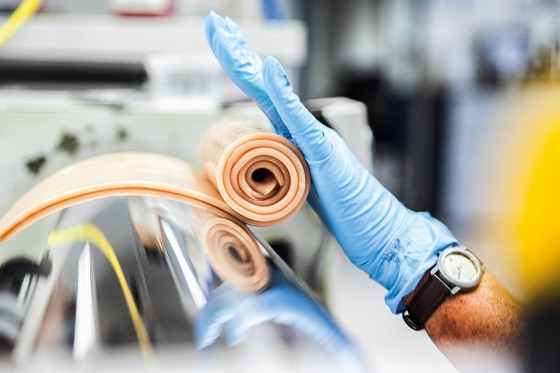
When the silicone has attained the desired skin tone, it is rolled out here free of bubbles.
Both the standardized liners and the highly-individualized hand or foot prostheses consist of high-quality, biocompatible silicone that meets specific purity criteria, stresses Leiniger. Ottobock uses two-component silicones for this that cure either at room temperature (RTV-2 silicones) or at elevated temperatures (HTV silicones). The first component comprises the actual silicone and substances that enable the polymers to crosslink. The second contains a catalyst that initiates and accelerates the crosslinking reaction. “When the two components are combined, a vulcanization reaction is triggered, and the material cures,” says Dr. Andreas Bacher, , technical service manager at WACKER SILICONES with responsibility for medical products. This so-called two-component addition-curing has the advantage of not releasing byproducts during curing that would irritate the skin. Furthermore, the material does not shrink. And once it has cured, the silicone remains dimensionally stable even when exposed to heat or pressure, unlike many other plastics that can deform.
Ottobock produces prostheses using silicone rubber grades from the ELASTOSIL® P and SILPURAN® series that meet particularly high quality requirements. Silicones of the SILPURAN® series are specially manufactured for medical applications under gray-room conditions and dispensed in a cleanroom. Both the gray room and the cleanroom are pressurized so that no dust or other impurities can penetrate them. The biocompatibility of silicones from WACKER is checked by external evaluators and certified according to international standards (ISO 10993 or US standard USP Class 6).
Never misses a competition
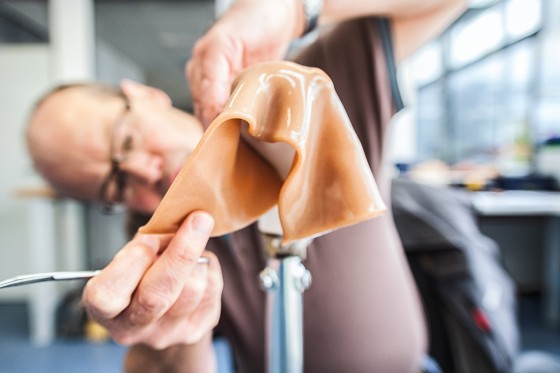
Then, an employee mounts the silicone slabs by hand on the individual stump model.
Ottobock achieved global prominence in 1988 when it became the main sponsor of the Paralympics. An international team of orthopedic technicians accompanies all competitions and offers the athletes technical support. It also conducts the necessary repairs to prostheses, orthoses and wheelchairs. Founded in Berlin after the First World War, the company mainly looked after war invalids initially. Nowadays, it focuses on patients who have had amputations due to accidents or illnesses such as adult-onset diabetes. The company now produces about 10,000 silicone liners, 150 hands and 120 feet each year. The patients are extremely appreciative of all the manual labor involved, and are repeat customers. For, no matter how realistic the prostheses may seem, they do not grow with the body and not even the toughest silicone can cope with the daily rigors endured by a hand or foot for longer than three to five years. Since the silicone wears down over time, like an eraser, the liners of prosthetic shafts must also be replaced after six to twelve months.
“Our silicones improve the lives of people whom fate has dealt a cruel hand and whose daily lives are often severely curtailed.”
Dr. Andreas Bacher, Technical Service Manager, WACKER SiliconesFor WACKER chemist Bacher, collaborating with the prosthetics craftsmen at Ottobock is always an uplifting experience. “Our silicones improve the lives of people whom fate has dealt a cruel hand and whose daily lives are often severely curtailed,” he says. It never fails to please him, he adds, that silicone prostheses can enhance their quality of life.


